Understand 10G SFP+ Transceiver From the Perspective of Connecting Cable Types
SFP+ transceiver is very popular in many data center and enterprise servers network application. As we all known, 10G SFP+ transceivers have a big branch family. Different SFP+ transceivers can provide a wide variety of connectivity options. There are several approaches for us to understand 10G SFP+ transceivers family. For example, with the compliance to different 10G Ethernet standard, we can classify transceivers as 10GBase-SR, 10GBase-LR, 10GBase-ER, 10GBase-ZR etc. Or viewing from the port type, we can see the difference between the SFP+ transceiver configured with duplex LC connector or a RJ-45 connector. But there is another approach we can understand and distinguish SFP+ transceivers. And That is waht I am going to talk about: the Connecting Cable Types.
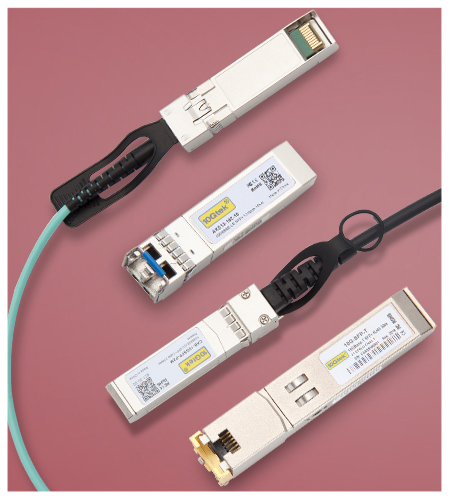
A variety of 10G SFP+ transceivers
1.Copper Cable
10GBase-T SFP+ is a transceiver configured with a RJ-45 port, which means that it uses copper cable to provide connections of 10G transmission speed. Cat 6, cat 6a or cat 7 copper cable is required in this situation. As for the transmission distance, it only supports a link length of up to 30 meters. 10GBase-T SFP+ transceiver is a suitable one for very short distances and offer a cost-effective way to connect within racks and across adjacent racks.
Table 1
| Transceiver | Style | Distance | Cable | Wavelength |
| 10GBase-T |  |
30M | Cat6, Cat6a,Cat7 Copper Cable | N/A |
2.Multi-mode fiber
10GBase-SR SFP+ is the transceiver using multi-mode fiber to transfer data in SFP+ family. It is using 850nm wavelength. 10GBaase-SR transceiver supports a link length of 26m on standard Fiber Distributed Data Interface (FDDI)-grade multi-mode fiber. Using OM3 multi-mode fiber, up to 300m link lengths are possible. Using OM4 multi-mode, up to 400m link lengths are possible.
Table 2
| Transceiver | Style | Distance | Cable | Wavelength |
| 10GBase-SR | 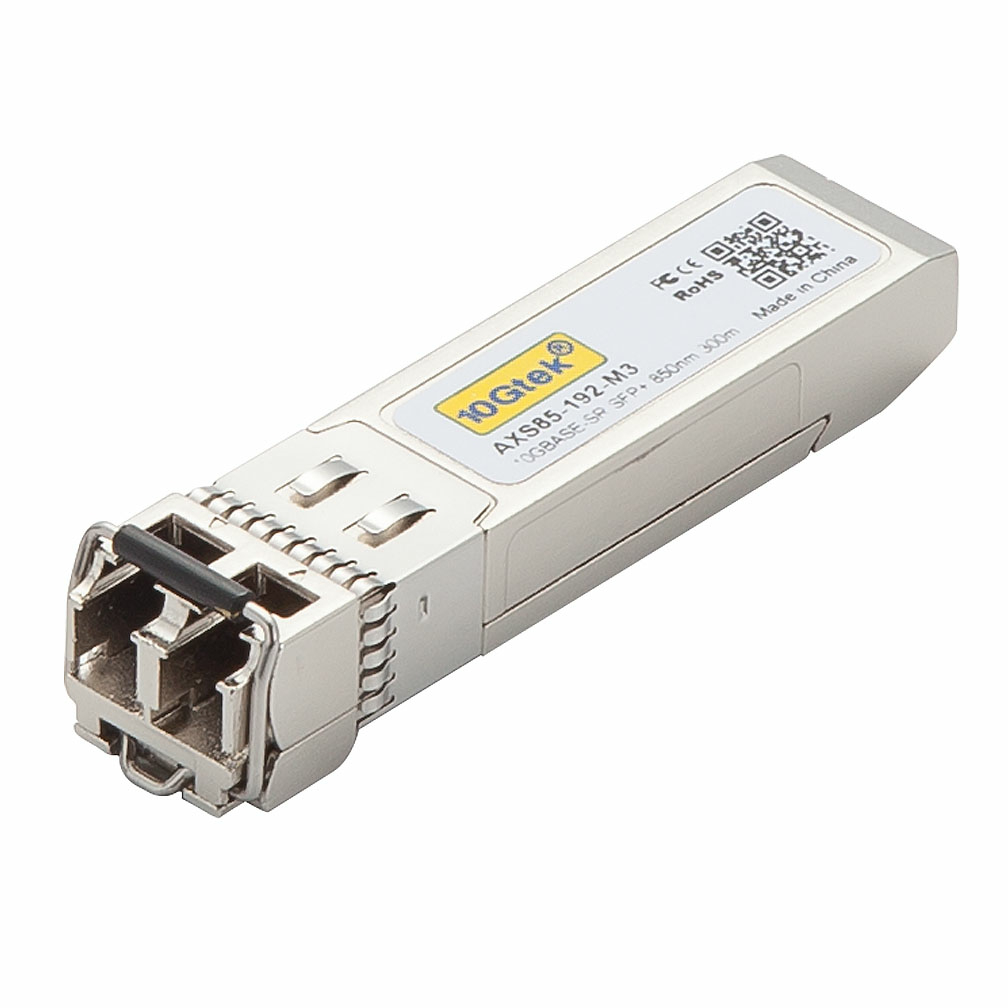 |
Up to 400M | Multi-mode | 850nm |
3.Both single-mode fiber & multi-mode fiber available
10GBase-LX4 and 10GBase-LRM transceiver is using both single-mode fiber and multi-mode fiber to transfer data. 10GBase-LX4 transceiver uses CWDM technology to divide 12.5 GB/s data streams into four 3.125 GB/s data streams that are propagated in optical fibers. And due to the 8B/10B encoding, the effective data flow is 10 GB/s. But 10GBase-LX4 transceiver has the disadvantages of high cost and much power consumption. Therefore,it has a very narrow market. 10GBase-LRM transceiver is a replacement of 10GBASE-LX4 transceiver, allowing distances up to 220 meters. It supports link lengths of 220m on standard Fiber Distributed Data Interface (FDDI) grade Multi-mode Fiber. There’s one thing to notice. To make sure that specifications are met over FDDI-grade, OM1 and OM2 fibers, the transceiver should be coupled through a mode conditioning patch cord. No mode conditioning patch cord is required for applications over OM3 or OM4. Besides, using standard single-mode fiber, 10GBase-LRM module also can support a link length of 300m. In general, multi-mode fiber connecting is the most application scenario for 10GBase-LRM transceiver.
Table 3
| Transceiver | Style | Distance | Cable | Wavelength |
| 10GBase-LRM | 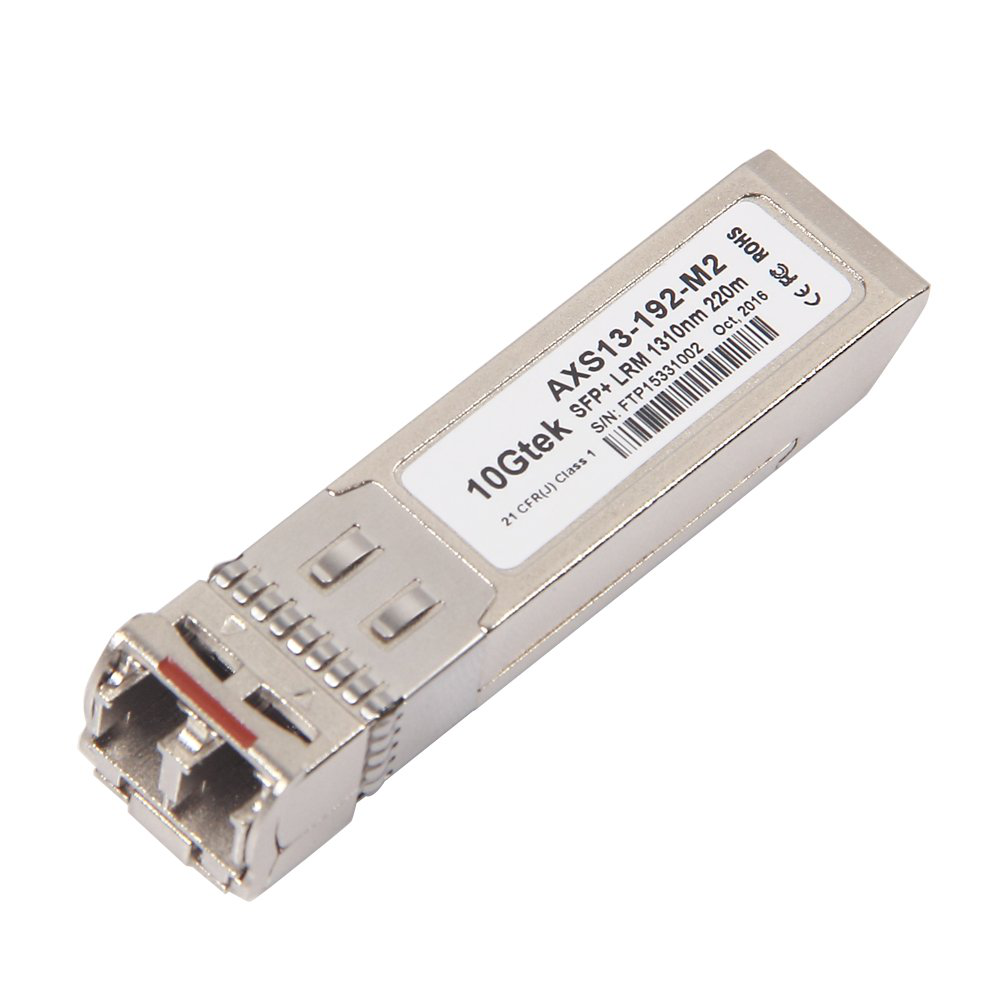 |
220M(MMF)
300M(SMF) |
Single-mode or multi-mode | 1310nm |
| 10GBase-LX4 | obsoleted | 300M(MMF)
10KM(SMF) |
Single-mode or multi-mode | CWDM |
4.Single-mode fiber
There are three basic kinds of transceivers using single-mode fibers to transfer data in SFP+ family: 10GBase-LR, 10GBase-ER, 10GBase-ZR. With carrying different wavelength, every transceiver can reach up different distances. For example, 10GBase-LR transceiver can support a link length of up to 10 kilometers. 10GBase-ER transceiver can support a link length of up to 40 kilometers. 10GBase-ZR transceiver can support a link length of up to 80 kilometers. Due to a superior transmission range and usually a long length of optic fiber cable, using these three transceivers means much higher cost. So these three kinds of transceivers are the better option where budget is not a constraint, or when the demand for long cable system.
Table 4
| Transceiver | Style | Distance | Cable | Wavelength |
| 10GBase-LR | 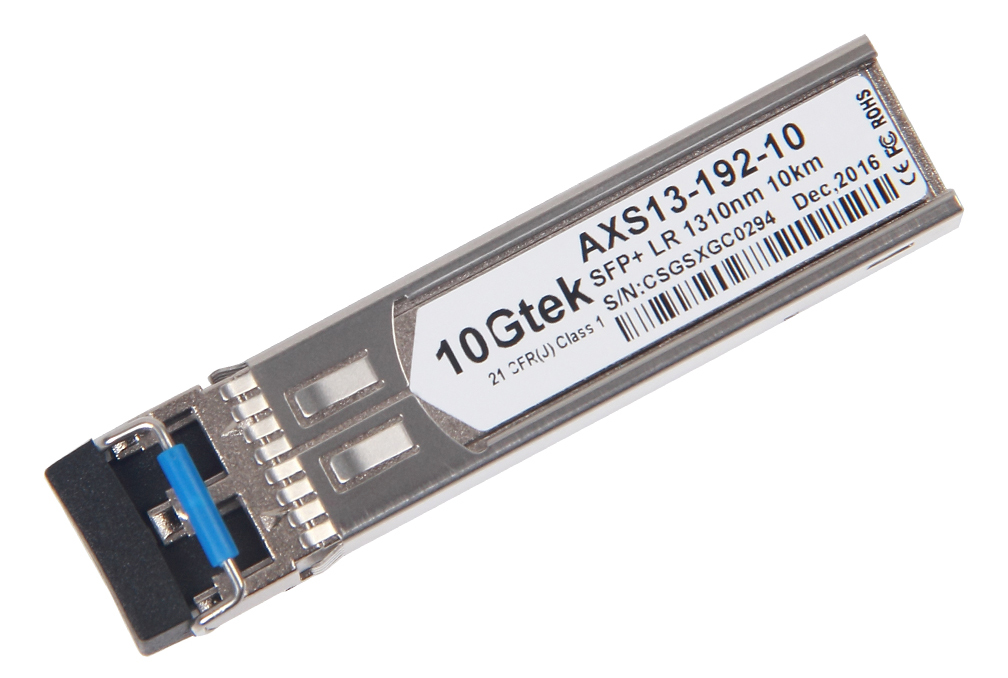 |
10KM | Single-mode | 1310nm |
| 10GBase-ER | 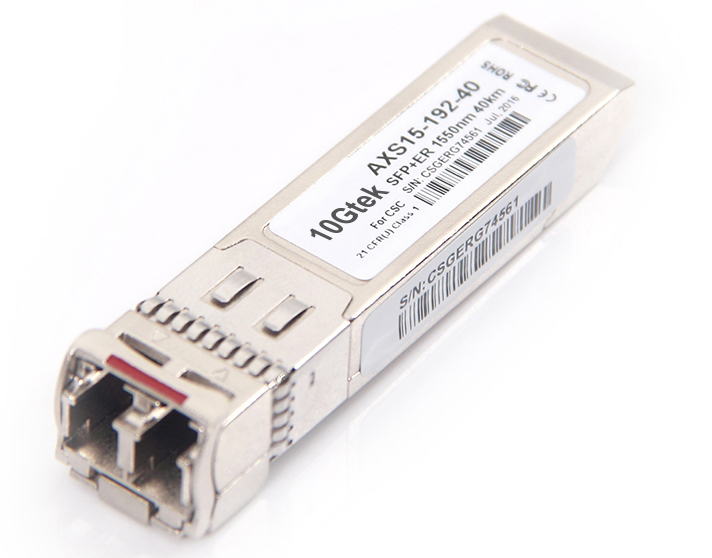 |
40KM | Single-mode | 1550nm |
| 10GBase-ZR |  |
80KM | Single-mode | 1550nm |
Conclusion
From the perspective of connecting cable types, we will have a more clear image of 10G SFP+ transceiver. In fact, we can easily draw the conclusion: different cable types constrain the transmission distance of the 10G SFP+ transceiver. The range of transmission distance is an important consideration factor of selecting SFP+ transceivers. Below is a detailed table for 10G SFP+ transceivers offered by 10Gtek, which gives you more reference information.
Order Information:
| P/N | Description | Reach | Fiber Type | Wavelength | TX Power(dBm) | RX Sens(dBm) | DDM |
| ASF-10G-T | 10Gbase-T | 30 m | Cat6a/7 | – | – | – | Y |
| AXS85-192-M3 | SFP+ SR | 300 m | MMF | 850nm | -6~-1 | <-11.1 | Y |
| AXS13-192-M2 | SFP+ LRM | 220 m | MMF | 1310nm | -6.5~-0.5 | <-10 | Y |
| AXS13-192-10 | SFP+ LR | 10 km | SMF | 1310nm | -8.2~0.5 | <-14.4 | Y |
| AXS15-192-40 | SFP+ ER | 40 km | SMF | 1550nm | -4.7~4 | <-15.8 | Y |
| AXS15-192-80 | SFP+ ZR | 80 km | SMF | 1550nm | 0~5 | <-23 | Y |
